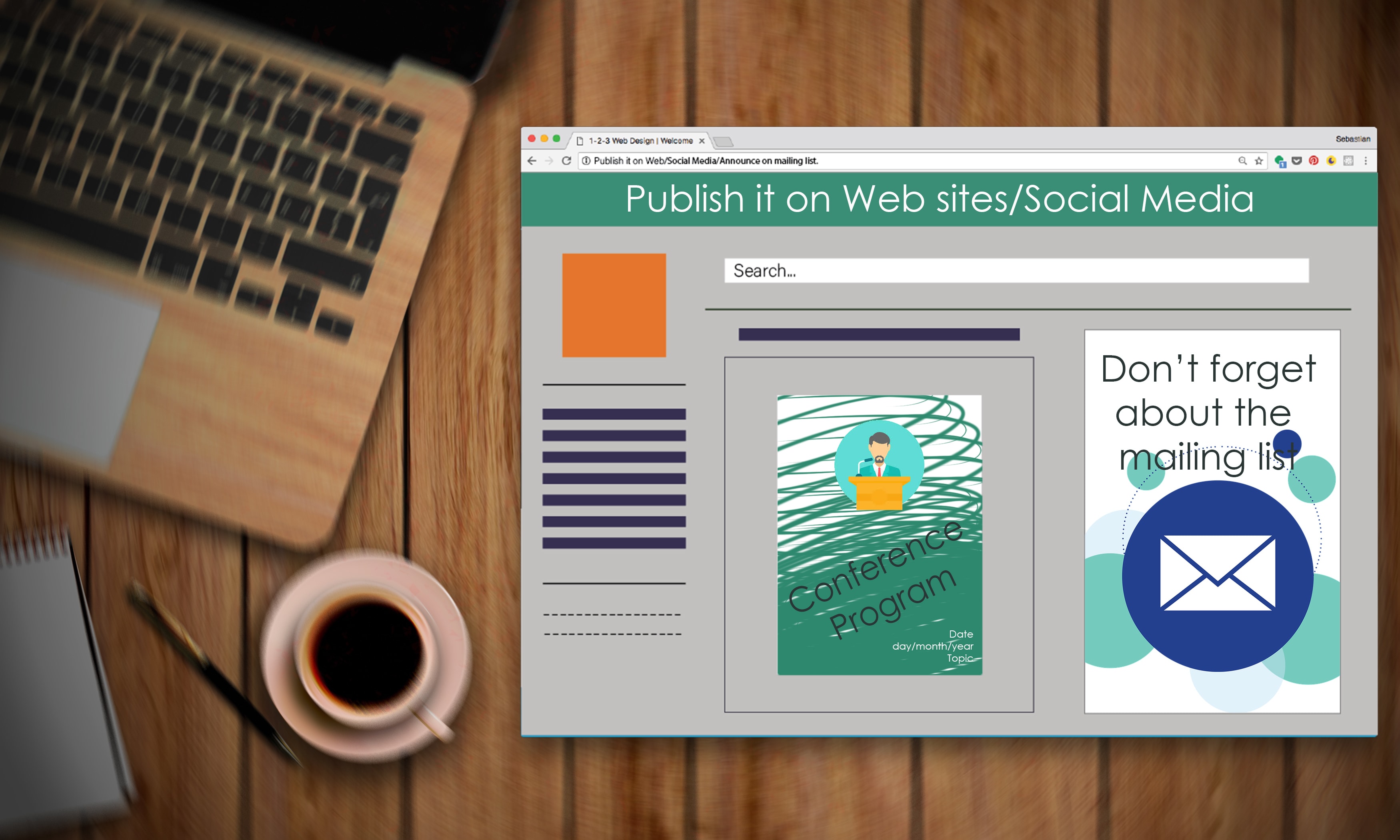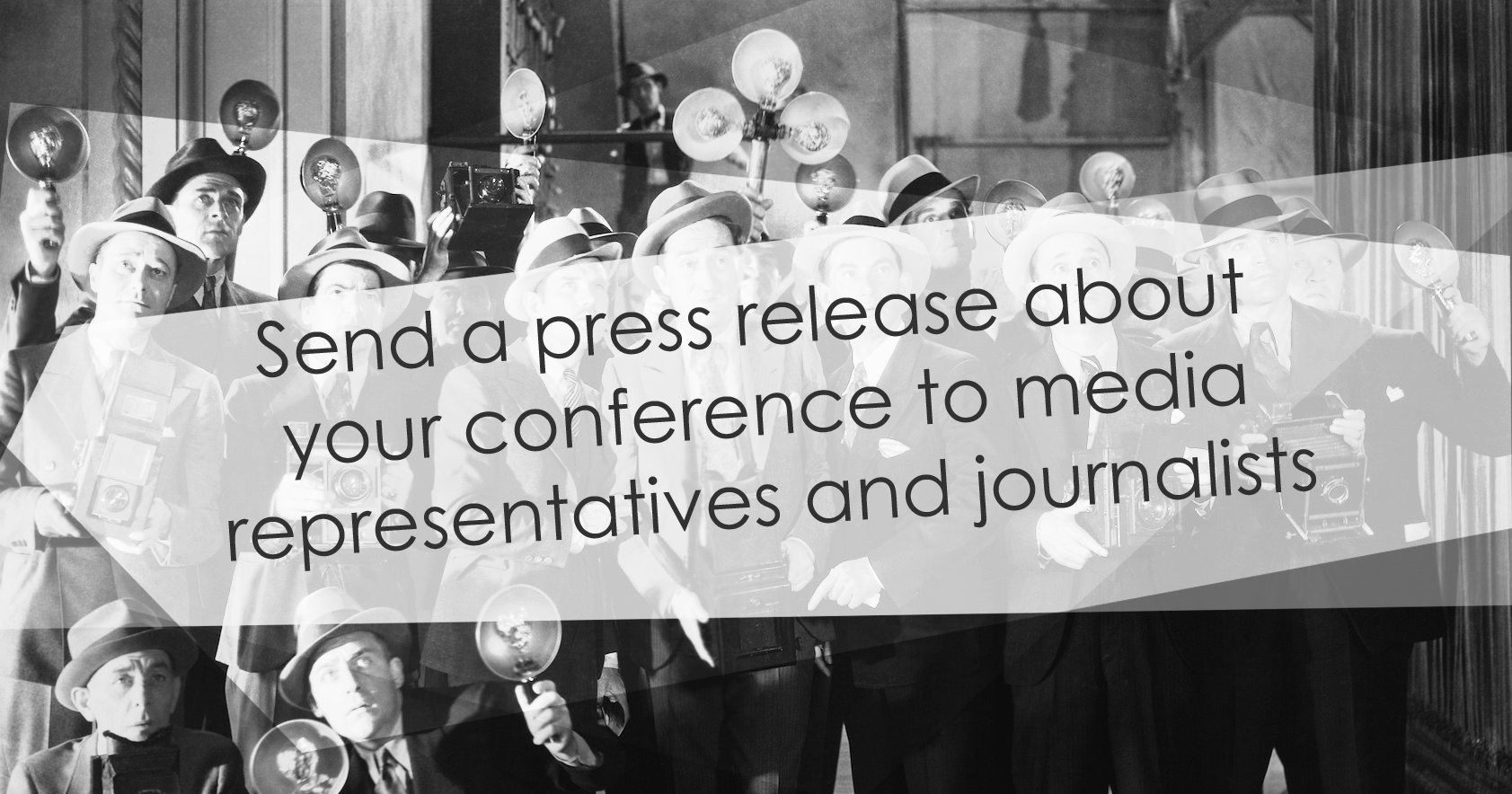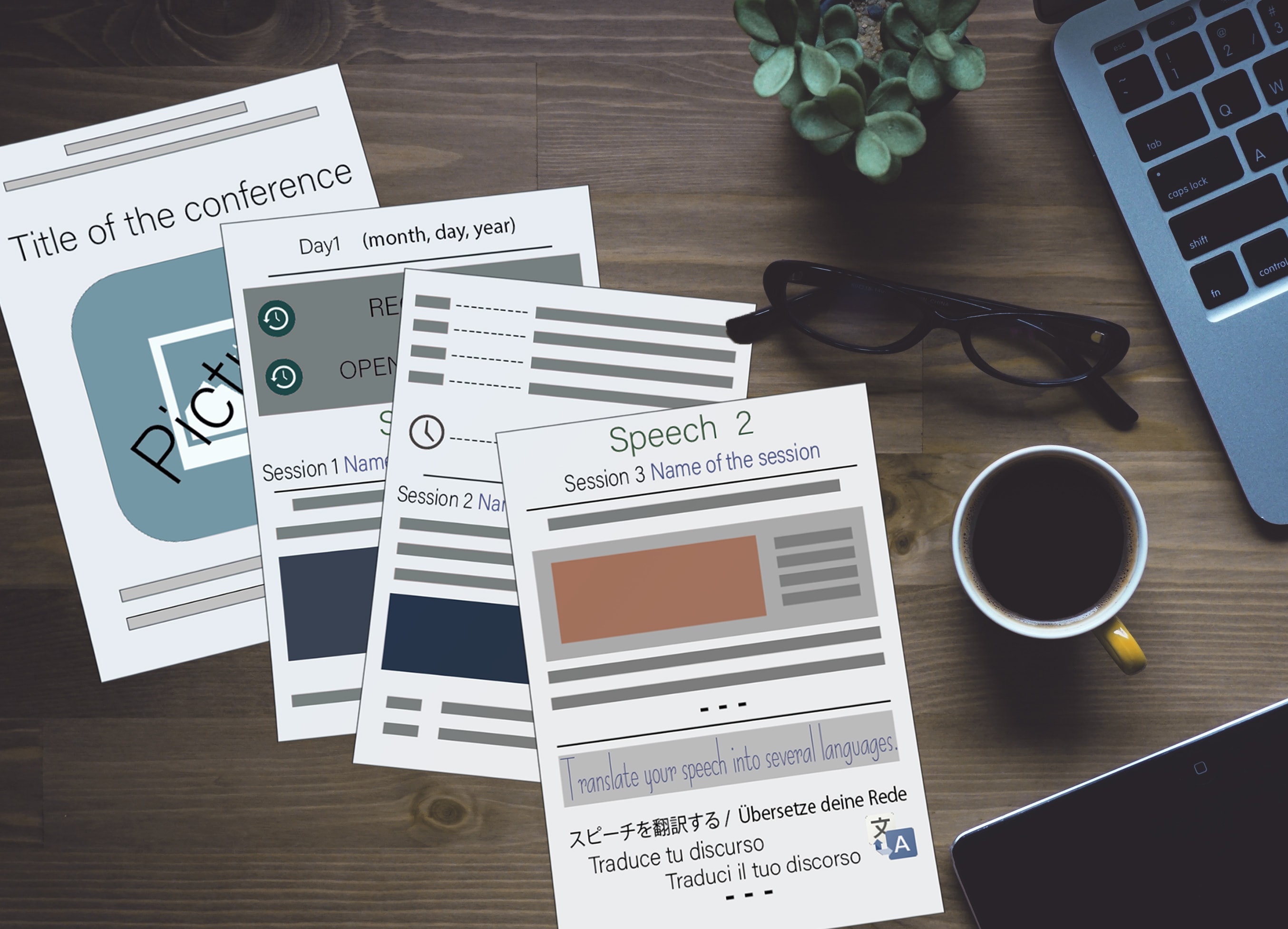Usually, academic conferences are organized by academic departments, institutes, NGOs, associations or foundations.
The people behind those conferences are department heads, enthusiast Ph.D. students, or other employees of the particular organization.
After the call for papers of the conference is distributed, conference organizers will receive abstracts from international scientists and scholars.
The selected applicants will then receive an email announcing that they have been selected to participate in the conference and are provided details about the conference, as well as details about visa application, travel, accommodation, venue and other details of the conference.
Around one month before the conference, the draft or final version of the conference program will be distributed among participants, so each will know the exact date and time of each presentation and the details of other presentations that may be of interest to each participant.
The importance of the conference program is essential and unfortunately, most often, conference programs are not being distributed as widely as the conference call for papers. Please take into consideration the steps below to distribute your conference program as widely as possible.
1. Prepare the conference program
(download conference program template here)
Start drafting your conference program as soon as you have received all submitted applications for your conference just after the deadline.
Try to identify those papers whose topics are most similar to each other and may be included in one panel, based on an issue or theme.
Each panel usually consists of between 3 to 5 single presentations.
Each presentation usually last from 15 to 25 minutes.
You have to inform the selected conference participants about the time they have to present their academic findings at the conference.
Having completed each of these steps, create the draft program, with details about the time of each panel, as well as for the coffee breaks and other necessary details.
While preparing the program please have in mind the interests of the participants and the target audience.
Most probably, it will be best to have parallel sessions.
While organizing those parallel sessions, try to have such parallel sessions whose topics or themes are not similar to each other. This is important in order not to restrict the attendance of interested people to all panels they want to be.
When your draft version of the conference program is ready, make sure to send it to all selected participants and request their confirmation of the planned timing and scheduling. Only after receiving their comments, should you make final revisions.
2. Translate the conference program into different languages
Ask your friends, students, colleagues to translate the conference program in other major languages.
Many people worldwide will be happy to read the conference program, see who attends, what are the topics and so on.
Of course, the main language will be English but imagine the same conference program also in Russian, Chinese, Arabic, and Persian, for some examples.
That way, many new people will have a chance to learn about your organization, the people working there, topics researched and other activities organized.
There is no other better way to promote your own institution than by offering translated versions of the conference programs that you organize.
3. Forget PDF, JPEG, PNG and other formats of the conference program. Text is king
It is a very common mistake to distribute the conference program in PDF, JPEG or other formats.
You may have those formats only as a supplement to your text version, but text is the preference.
And always have the text version first. Wherever you post or send the program information, do it in text version and attach other formats only as a supplement.
Why?
When you send the conference program via email only as a pdf or jpeg, people have to press several more buttons to see the program, making the process unnecessarily complicated.
Also, when you publish the conference program on the web as a pdf or jpeg it is not well indexed by search engines and people have to press a button, download the file and afterward see the program.
The much better and easier, and more comfortable way is to rely on the text. Distribute the whole text and attach any other file for those who would love to click and see those files.
4. Publish your academic conference program on a website

Usually at least two weeks before the conference starts, the conference program goes live for the general public and academic communities worldwide.
If your institution possesses a website, make sure to publish the whole text on that website.
The title of that announcement is a very important part that you have to take into consideration.
I suggest to start the title with the following abbreviation “CONF/PROG”, because if you start the title with just conference, it will not be clear, whether you announce a conference program or a call for papers of that conference.
The suggested title of your conference program to be published on a website will have the following look - “CONF/PROG - Conference name, Dates, Institution, City, Country”.
After you publish the conference program announcement in the main language, you may also publish the translated versions, or just attach the translated versions as well as other materials, such as posters and relevant pictures as a supplement to the main language announcement.
If your organization does not have a proper website, please use ARMACAD as the main place to publish your conference program.
Do not open a new website or blog just to announce your conference program. Newly opened websites with no other data may seem suspicious and untrustworthy, as well as a waste of time, so you will lose more rather than gain.
5. Announce the conference program on mailing lists
Most probably you had distributed the call for papers of the same conference to different academic mailing lists (learn more about promoting your academic conference call for papers here).
Now when your conference program is ready, send it to the same mailing lists as well.
You may always find many other mailing lists in your specific field of interests and promote the conference program also through those channels.
Academic mailing lists are communities of academically oriented people, through which information about events in that particular field is distributed.
As soon as you find an academic mailing list, it is easy to subscribe and after you become a member of that list, you can send your information through that channel for free.
Copy the full text of the conference from the document, paste it in the email body, write the title which starts with “CONF/PROG” in the subject line, attach any other supplementary information and share it to the list.
Sometimes the list admin has to confirm the post before it is distributed to all members.
6. Send a press release about your conference to media representatives and journalists

A day or two before the conference starts, it is smart to send a press release to your local media (websites, blogs, TV, radio) and journalists. Media agencies usually publish this press release with pleasure and, moreover, they sometimes will send reporters to the event.
In the press release, which should not exceed one page, write all the important details about the scope of the conference, organizing bodies, main countries and academic institutions the participants represent and the details about the main organizer for the journalists to contact for any questions.
With the press release, also send the file of your conference program as well as the link to the website where the program is published.
Many news websites will publish the press release and will provide a link to the conference program website. So you will have a chance to inform a larger audience about your conference to reach a vast majority of people who may be interested in your conference.
7. Announce your conference program on partner websites
Send an email to your colleagues in different universities, cities, and countries and ask them to publish your conference program on their websites.
Most importantly ask those who are going to present at your conference to publish the conference program on the websites of the institutions they represent.
ARMACAD is among the few websites that, has a section for conference programs.
So it is always a good choice to publish your conference program on ARMACAD’s website, because apart of being distributed to all scholars and scientists registered in ARMACAD your conference program will be also well indexed and be available through search engine searches and queries.
Our platform also gives you a chance to follow the statistics and compare your announcement to others you had published with us previously.
It is also very important to promote the conference abstracts alongside your conference program. Thus, you may publish your conference abstracts with ARMACAD and rest assured that many interested parties worldwide will get the chance to read those texts.
8. Use social media to promote your conference program
Most probably your institution has a Facebook and Twitter pages as well as a Facebook group.
Publish the program there regularly as well as on your personal Facebook page.
You may find your conference participants on Facebook and tag them when you post the conference program.
Also, send them a personal message and ask to post the program on their personal pages as well as on the pages of their institutions.
In the case of Twitter, when you post the link which directs to the conference program tag the profiles of several other institutions, which may be interested in your content.
By doing that, you will attract their attention, and most probably those profiles will also share your content.
9. Publish a hard copy the conference program and abstracts for the conference days
Usually, conference organizers publish the hard copy of the program and distribute it to all who attend the conference.
In this published version, not only stress the program, but also make sure to include each of the abstracts of selected participants of your conference.
Publishing all abstracts online is another trick you may use to promote your conference.
I will write another blog post about promoting your conference via publishing the conference abstracts very soon.
What to have in mind while organizing a conference and promoting your conference program?

Have the general public in mind from the very first day you start organizing your conference. Do not restrict your conference to conference presenters only.
Promote your conference to attract the attention and interest of students, other departments, people living in your city, etc.
Always mention in the promoted program that the entrance is free and everyone is welcome to attend.
Have in mind that one of the best ways to promote the organization which is behind the conference is through widely distributing the conference program it organizes.
By doing this you will attract international and local recognition.
If you are an NGO, the conference will help you also attract the attention of potential donors and prove to them that you are the best in your field and worthy of their support.
If you represent a university or a department your widely distributed conference will indirectly attract the attention of potential students who may once become enrolled in your department.
Concluding the 9 steps to promote your conference program
Conferences are a great tool to promote the name of the institution that organizes the conference.
So do not lose the chance and promote it.
Use the 9 steps mentioned above and you will gain more and more international recognition every year.
Once you promote your conference program as widely as possible, be sure that for the next years' conference you will receive more applications.
People worldwide will happily interact with the conference program you share, as it is always interesting and intriguing to read conference programs and see who else from your field are presenting interesting topics and to understand the general participant scope of each conference.
Scholars and scientists decide on which conferences to participate by evaluating the programs of the previously organized conferences of the same institution.
Your audiences consist of both the general public and interested parties, and also reporters and journalists, officials and students.
On the other side, your audience is also the international academic community, which for sure will be happy to have your conference program in any corner of the world.
As a conference organizer it is your direct responsibility to inform the world about your conference via promoting the conference program.
Khachik Gevorgyan
Founder of ARMACAD
Published on Aug 08, 2017








